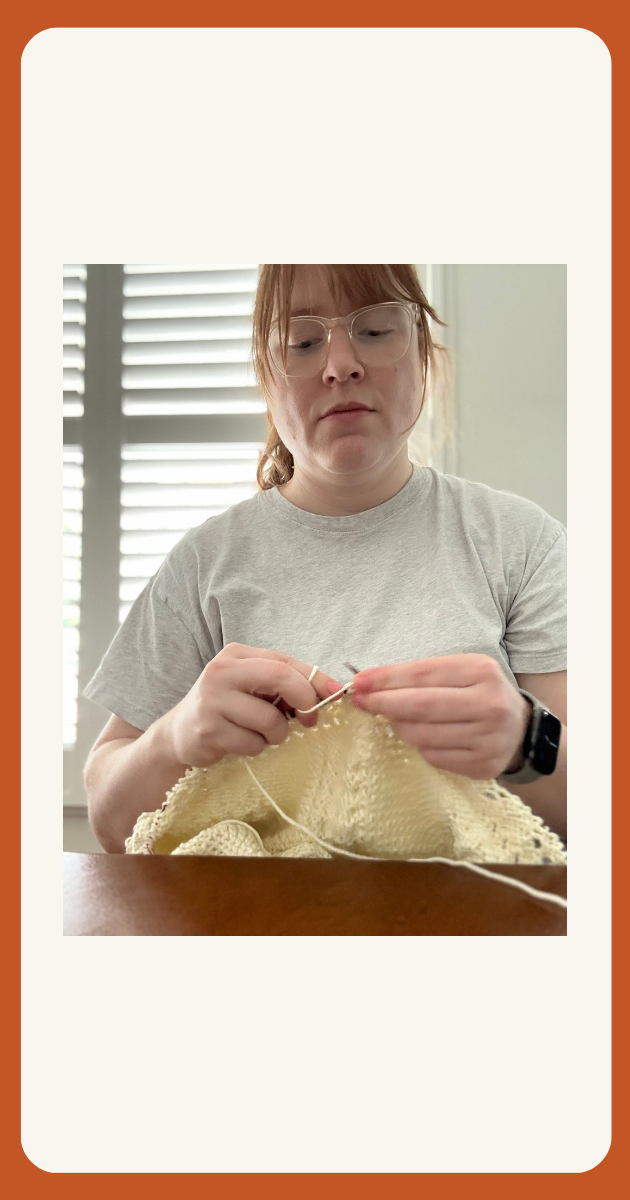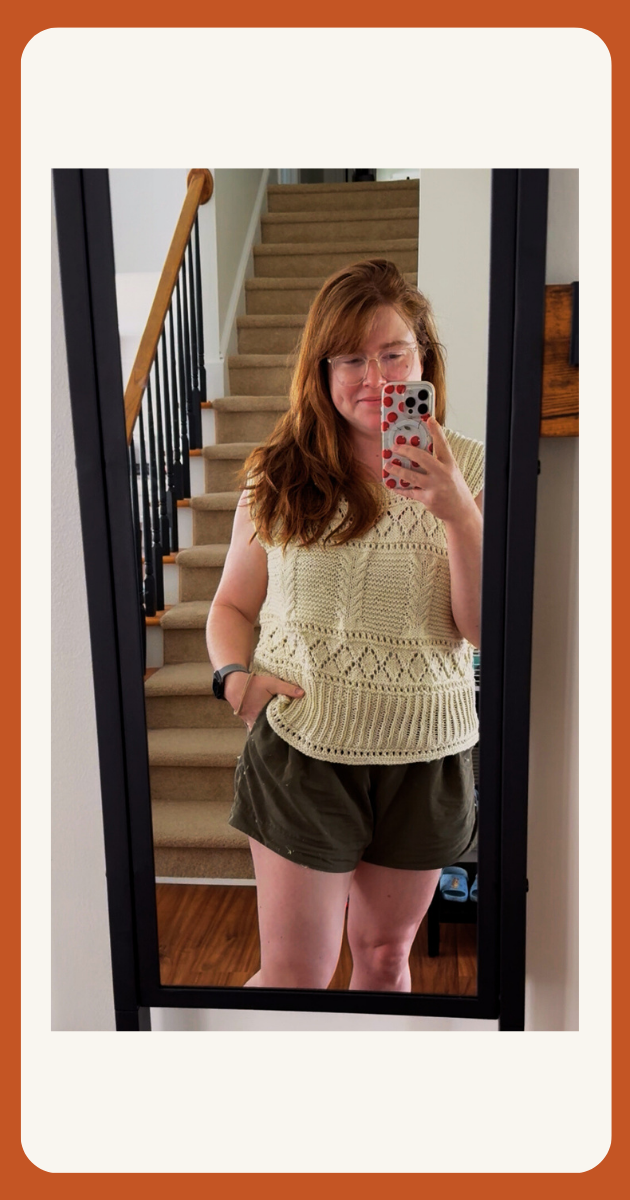How to Use Craft Therapy for ADHD and Anxiety
Are you hitting a wall in managing your anxiety and ADHD?
It’s easy for emotional exhaustion and overwhelm to hit when you’re trying to be the best (especially if you never want to seem stressed). But you’re an overachiever. You’re not just gonna give up, right?
Perhaps you haven't found that one approach that will help everything click in to place. The one approach that gives you that flow state and creativity from your ADHD, and the emotional sensitivity from the anxiety.
Well, may I humbly suggest craft therapy.
Grab your emotional support water bottle and dive on in with me, friends.
First, what is craft therapy for ADHD?
Have you heard of crafts being a coping skill or a form of therapy before? It's no problem if you haven't!
Craft therapy is a way to turn creative hobbies into a healing asset. It helps you feel more grounded, less anxious, and able to handle ADHD symptoms (brain fog, overwhelm, and emotional fatigue).
If you've been in therapy before, you know how therapy can turn ‘just talking’ into life changing benefits. Craft therapy aims to do the same thing, but with your favorite crafts.
Craft therapy helps you feel more focused and at ease—without adding another planner or self-help book to your list.
It's also good to know that:
People with ADHD and anxiety naturally gravitate toward crafting. May as well super charge your fave hobby into a healing experience!
The creative process, choices of colors and textures, and the almost instant gratification can help feel accomplished and satisfied.
Crafts that use both hands—like knitting or coloring— calm your body and mind by activating your nervous system’s relaxation response.
Creative processes naturally challenge perfectionism. Perfectionism encourages us to stay with what we know, so we don’t risk feeling the pain of failure. But creativity encourages us to find joy in new things and making mistakes.
Crafting gives opportunities to practice other mental health coping skills like breathing, gratitude, grounding, and active mindfulness.
How I Started Using Crafting to Improve My ADHD & Anxiety
You might look at me now - someone with a private practice, a calm morning routine, and a few fabulous hand knit sweaters - and think, “Okay, but she clearly has it together.”
But a few years ago, I was exactly where you are.
Waking up already overwhelmed. Pinning 42 “healing rituals” and not doing any of them. Switching between hyperfocused planning and total shutdown. Trying to earn rest by being good enough.
Then I found craft therapy. Or more accurately, I stopped making crafting about productivity and started using it to come back into my body. And that changed everything.
Here’s what shifted for me:
I stopped treating crafting like a reward and started using it like a regulation tool.
Instead of pulling out my knitting when everything was done (spoiler: never), I started picking it up when I felt off. Anxious, tense, crunchy. Even five minutes made a difference.
I started noticing how I felt while I was making—not just whether I made it ‘right’.
Suddenly, dropped stitches weren’t mistakes—they were signals. My body was asking me to slow down. So I did. And it made me a better therapist, a more present mom, and a much softer version of myself.
I reclaimed creativity as a nervous system need—not a frivolous extra.
The rhythmic motion, the texture, the repeatable patterns became a form of somatic scaffolding. I wasn’t just making sweaters. I was making space to breathe.
And no—it wasn’t magic. It was practice. A lot of unlearning. A lot of letting go of perfection. A lot of noticing how my body responded when I gave it just enough rhythm and structure.
Side note: This is the path that worked for me—but it’s not the only one.
My colleague Dr. Cathay Malchiodi, for example, uses bilateral drawing to help women heal from trauma. Her approach is more expressive-art focused, while mine is more repetitive-motion and fiber-based. You can absolutely combine the two for a healing practice that’s both reflective and regulating.
No matter which you choose, you deserve a way to feel like yourself again—without having to earn it.
5 Actionable Steps to Implement Crafts for Mental Health Today
You know how craft therapy works now, but maybe you're struggling to see how you can make it work for you. When my client and I decide to add craft therapy into our treatment plan, this is what I say -
I have ADHD and Anxiety, what craft should I choose?
If you’re thinking “Emilea, I’d love a hobby, really I would - but I don’t have any idea where to start. The last time I crafted was in the 7th grade when I made an origami swan for a friend. Help!”, then read on!
Please know you’re not alone. So many of my clients focused on achieving at work and caring for others that they forgot how to do something just for themselves.
There is no Perfect Craft for ADHD and Anxiety. It’s the creative process and your presence with it that turns a hobby into a form of therapy.
Now, if you don’t already have a craft you enjoy and really want to start craft therapy, then this is your protocol:
Go to a book store.
Browse, flip through random books, and get lost.
Eventually you’ll probably find a subject that grabs your interest
Start there, and start small.
For example, if you fall in love with a book on embroidery, then buy a small embroidery kit. No need to go out and buy a dozen bobbins, a laying tool, and an aficot.
How to Start Crafting for Your ADHD and Anxiety
Now, if you have a craft and are ready to turn it into your mental health asset, this is where I tell my clients to start:
Create a ‘Nervous System Project’ you never have to finish. Work on it without distractions—no podcasts, no TV—just you, your craft, and your body. The goal isn’t to finish. It’s to be present and let your nervous system settle.
Be careful not to turn your craft into a productivity hack. You don’t have to earn it by finishing chores. Just like therapy, craft time isn’t a reward—it’s support. It’s there for you, even when the laundry isn’t done.
Read Stitch by Stitch: A Free Guide to Healing Anxiety & Perfectionism Through Knitting. After experiencing amazing mental health benefits while knitting, I wanted to help others have a similar experience. I wrote a whole ebook of why it worked, how it can work for you too, and a set of patterns to get you started! Grab your free copy here now.
Contact me for support with building a craft-based self regulation practice. There is NOTHING I love more than to talk crafting AND routine creation. So if you’re struggling with figuring out where to start, what to do, or something strange comes up - send me a message! I’d love to chat.
Don’t confuse crafting for distraction with crafting for nervous system care. Yes, knitting while rewatching The Residence is fun—but that’s not craft therapy. Just like talk therapy isn’t the same as chit chat, craft therapy isn't background noise. Your craft needs to be a container for healing.
Case Study: How Laura Beat Burnout With Craft Therapy
Note: Laura is a composite of four different clients I’ve worked with over the past five years. This protects their confidentiality—something I take seriously as both a clinician and a human. I've changed or deleted any identifying information. The results discussed however are very real and were wonderful to watch unfold from my therapist chair!
Laura felt fed up with feeling irritable and resentful. She’s an elementary school teacher, and she felt like her brain never ever shut off. It was always tallying what she needed to do for her classroom, students, parents, and fellow teachers. She left work and then home hit her with more to-dos—make dinner, switch the laundry, pack lunches, and the kids’ bedtime routine.
She told in me in session, ‘It feels like I’m suffocating. I feel like my life is taking all of the oxygen and joy from my body.’
Thankfully, when she started therapy, we began to untangle the real pattern. Her perfectionism told her "be amazing at everything, all the time." And her ADHD flooded her with a thousand ideas for how to do it.
Add in the constant sensory overload, and her nervous system never caught a break. The perfectionism piled on shame. The ADHD kept the engine running. No wonder she felt constantly irritated—she was only relaxed when she was asleep.
I suggested she start craft therapy.
In her own words, “Yeah right Emilea, when am I going to have time for that?” That’s the clean version.
But then she went through everything else she had tried. Massages, 5am yoga, long baths, and even ice cold showers. Then she said “I mean, I guess I can try, I know what I’m doing isn’t working.”
To her surprise, she began finding a little bit of time every day to color in a coloring book. The consistency of the practice gave her a feeling of accomplishment. She noticed that if she colored at the end of her work day, she felt more settled at home.
She enjoyed sharing any of her finished pictures with her husband and kids, and they began having family art time before bed.
There is still a lot of stress in Laura’s life. But crafting helps her dissolve the daily stress in her body so that she can enjoy her life.
I’ve watched her recover from burnout. Her relationship with her kids is more gentle and rewarding. She feels like a better teacher and friend.
Walking with Laura through this process of creativity and healing is so sweet. I love being a therapist. As I’m writing this, I feel some tears coming to my eyes. My clients are the coolest people, and I love watching their own creativity remind them and help carve out their path toward healing.
Wrapping it Up
People like you and Laura are exactly why I became a therapist.
My goal is simple: make therapy that helps women embrace their ADHD and honor their anxiety. I created therapy that speaks to the burnout and beauty of living with ADHD and anxiety. We don’t need to throw everything out. We just need to drain the bath water and wrap that brilliant, sensitive baby in a warm, soft towel.
From there, I launched my online therapy practice for anxious women with ADHD in South Carolina. I work with overachieving women who secretly feel stuck in a cycle of overthinking, overwhelm, and self doubt. They're high achieving, burned out, and constantly asking, "Why can't I just get it together?"
I've helped women across South Carolina embrace their creative, fast-moving brains and feel safe when life gets messy. In online therapy, anxious women with ADHD move through burnout and know they're worth (even on couch rot days).
If that sounds like something you’re interested in, then let’s chat!
Good job on making it to the end of this post! That type of commitment shows that you’re committed to your own health and happiness.


